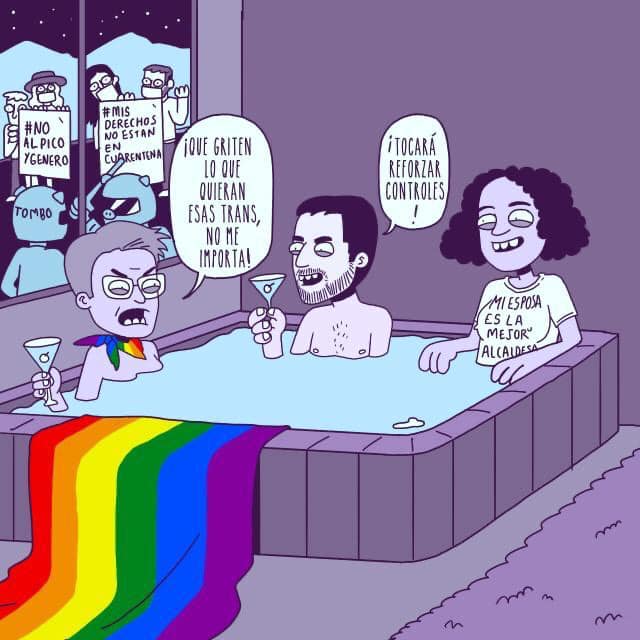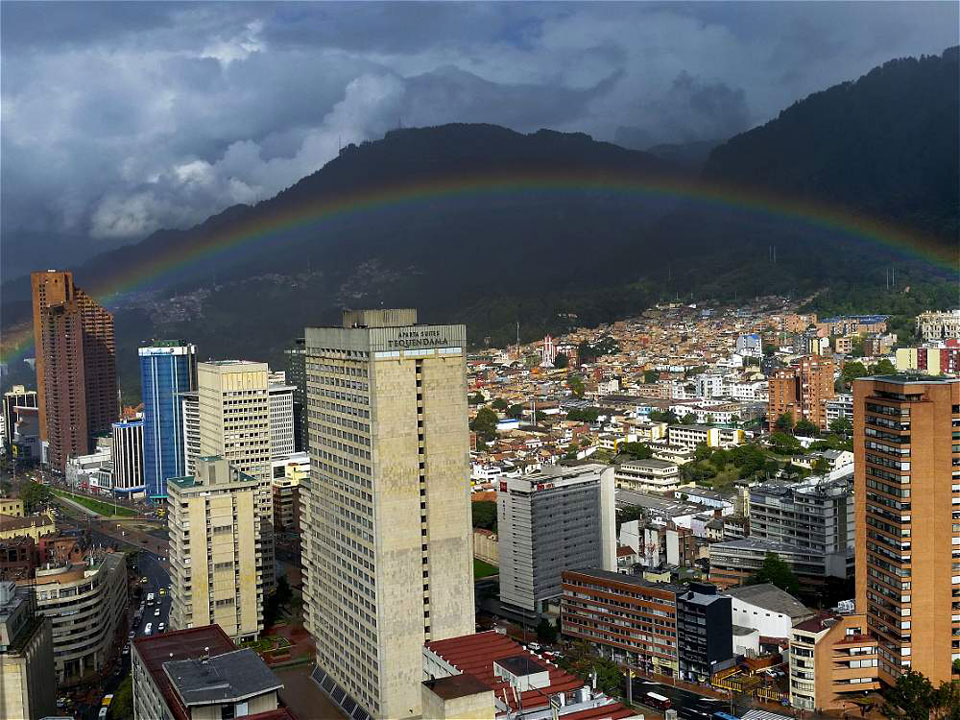Trans activist opposition, incidences of discrimination, and other reactions.

The capital’s controversial pico y género policy has been in effect for well over a week now, though not without vocal opposition from trans rights organisations with concerns over discrimination and violence.
Pico y género in practice: Incidences of discrimination
Some initial reports stated that nothing had changed and that both men and women were still circulating freely without visible policing. But by the end of the first day of pico y género, there were also at least two known reports of possibly discriminatory incidents.
Videos of these kinds of incidents in supermarkets have gotten thousands of views on social media as confused employees attempt to enforce the policy as they understand it and both trans and gender-nonconforming citizens attempt to follow the decree as it is written. The measure and subsequent clarifications state that citizens can leave their homes on the days that correspond to their gender identity.
In conversation with The Bogotá Post and Balistikal, a new LGBTQ+ community healing and arts organisation in Chapinero, Red Comunitaria Trans cofounder Daniela Maldonado Salamanca shared her initial experience of fielding discrimination reports from trans community members.
“It hadn’t even been 24 hours [since the start of pico y género] and we were already aware of the first case of transphobia in Paloquemao. That same day, we saw another case [of discrimination], with one of our trans brothers in the Policarpa neighbourhood. It was the police but then the people surrounding him began to poke fun at the situation and to shout out violent things,” Maldonado said.
The Red Comunitaria Trans has been resolute in its opposition to the measure since Bogotá mayor, Claudia López first announced it, having published its official oppositional stance early on in a letter on social media. The organisation followed up with excerpts from another letter to the mayor, on April 18 reiterating their dissent and imploring her to reconsider maintaining the measure:
“A public policy, even an emergency one, should not be implemented if it is to the detriment of any social group… Mayor, you’re still on time. Reconsider. Don’t keep waiting for more incidences of violence to occur before taking concrete actions to protect our lives.”
On that same night, Fundación GAAT (Grupo de Acción y Apoyo a Personas Trans) reported that a trans woman in Ciudad Bolívar had been punched in the face. The aggressor defended his actions by explaining that the victim was out on a day designated for women, a day that in his opinion did not correspond to the victim.
“It’s really painful and it feels terrible to be an activist influencing social justice causes because you have to deal with a lot,” Maldonado commented. “It’s not just about carrying what might happen to you because you also have to carry what might happen to other community members.”
April 11 Mayoral memo to address enforcement questions
On April 11, two days before the official enforcement of pico y género, the mayor’s office sent a memo to city police authorities addressing questions that arose out of the original decree. A key issue was how the police – who have a problematic record of violence against the trans community – would enforce the measure. The memo clarified that “showing personal identification will not be required to prove a person’s gender identity.” It also acknowledged the existence of nonbinary individuals, stating that they should choose one category of days, odd or even-numbered days, during which to go out on essential errands.
According to El Tiempo, police, the mayoral secretary, and representatives from concerned activist groups met on April 13 and “agreed on a protocol for police to follow while applying the measure.”
Pico y género in practice: Opinions and reactions
A nonbinary Bogotá resident that asked to speak anonymously feels that the measure is necessary, though flawed.
“Personally, I think the measure works well. I mean, I think it’s clearly easier to identify a man and woman than having to ask to see their identification, which requires [physical] contact which is what we’re trying to avoid. As far as safety goes, I think it’s complicated because it’s the police force that has always been characterised as being an abusive and intolerant entity. So it’s in that respect that I think the measure fails,” they said.
They explained that when they went out on a day designated for women (having chosen a day as per the mayoral memo), they felt safer. The absence of men gave them a greater sense of security, as it has for others in the city.
According to Flor Chavela “Feathers,” a member of the voguing house KikiHouse of Feathers, “This isn’t only an issue for trans people, this is an issue for people who have diverse gender expressions.”
Chavela added that women in their social network who have had to go out on odd-numbered days, either to perform essential work functions or simply to walk their dogs, have felt vulnerable under the intimidation of an all-male public. They also estimate that street harassment has increased on odd-numbered days.
Pico y género “is an invitation for the feminist movement to show up,” Maldonado said. “So that they don’t stay silent. There are a lot of people who don’t agree with this. And we as women are more vulnerable.”
Maldonado argues that Pico y género is not necessary and that more creative solutions can be found that control the public circulation of individuals while minimising contact.
“If you need it because you want to be able to have a ‘visible’ control measure, you can do it by pasting your id on yourself in a visible way,” Maldonado said. “Like the way workers wear name tags.”
She argued that pico y cédula works because it’s neutral and does not put any particular social group at risk.
“It’s painful to see that people think that we just don’t understand [the importance of] the quarantine when really, our whole lives have to be lived in hiding, in alternative spaces, so that we can feel safe,” Maldonado said.
“Sometimes there’s more fear around dying of transphobia than of COVID itself.”
Pico y género retracted in Peru
Just two days after Bogotá’s pico y género was announced, neighbouring Peru withdrew its own nation-wide version of the policy on April 10. Peruvian officials concluded that the policy did not meet its intended purpose of reducing the number of people transiting public spaces on any given day. According to France 24, the policy was deemed ineffective because streets were busier on the days designated for women than they were on the days designated for men. Presumably, women are disproportionately more likely to take on essential errands like grocery shopping. This rendered the policy futile and shed light on the commonly gendered, unequal distribution of domestic tasks.
“I think that we could and we should learn from Peru,” said Diana Castro, an activist and member of the local collective Colectivo Guerrillerass.
“The measure was dismantled after exposing a lot of people to humiliation, violence, and aggression. And it didn’t prevent crowds from forming.”
*Trans and LGBT+ organisations like the Red Comunitaria Trans @redcomunitariatrans and Balistikal @balistikal have been active on social media since the measure was announced, communicating their oppositional stances and raising awareness about related incidences of discrimination.





